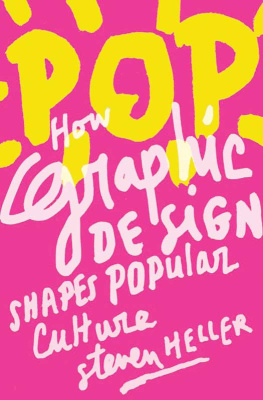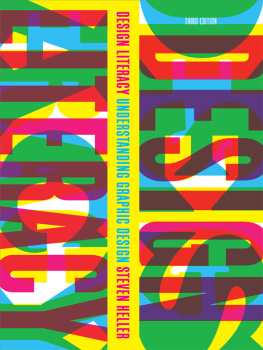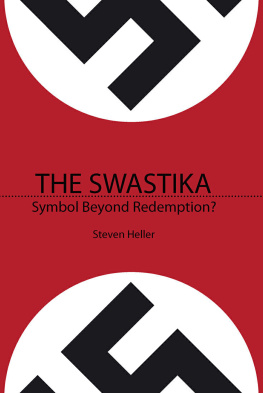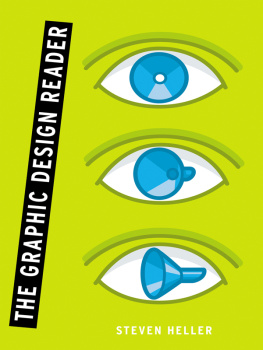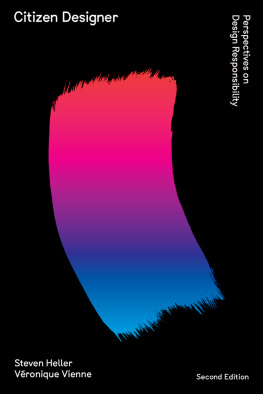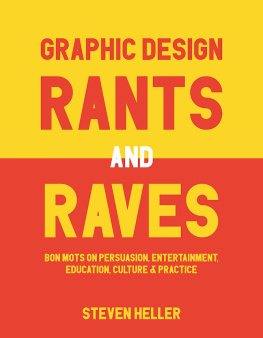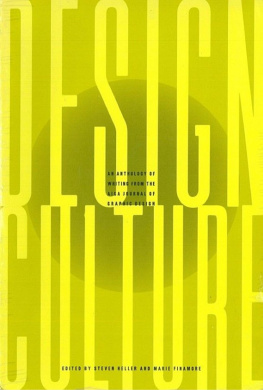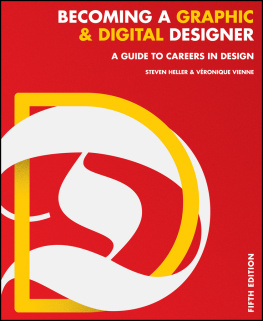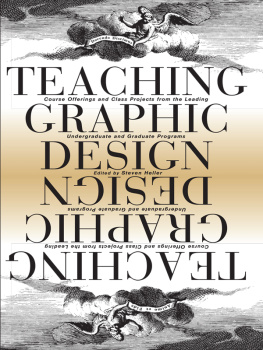Pop
How Graphic Design Shapes
Popular Culture
By Steven Heller

2010 by Steven Heller
All rights reserved. Copyright under Berne Copyright Convention, Universal Copyright Convention, and Pan American Copyright Convention. No part of this book may be reproduced, stored in a retrieval system, or transmitted in any form, or by any means, electronic, mechanical, photocopying, recording or otherwise, without prior permission of the publisher.
Published by Allworth Press
An imprint of Allworth Communications, Inc.
10 East 23rd Street, New York, NY 10010
14 13 12 11 10 5 4 3 2 1
Cover design by James Victore
Interior design/page composition/typography by James Victore
ISBN: 978-1-58115-715-4
eBook ISBN: 978-1-58115-768-0
Library of Congress Cataloging-in-Publication Data
Heller, Steven.
Pop : how graphic design shapes popular culture / by Steven Heller.
p. cm.
The essays in this book were written for various periodicals, Web site journals, and blogs, including Print magazine, Eye magazine, Baseline magazine, Metropolis magazine, Grafik magazine, DesignObserver.com, Voice: AIGA Journal of Design, and The New York Times T Magazines The Moment blog--Acknowledgments.
ISBN 978-1-58115-715-4 (pbk. : alk. paper)
1. Art and society. 2. Graphic arts. 3. Popular culture. I. Title. II. Title: How graphic design shapes popular culture.
N72.S6H392 2010
741.6--dc22
2010009935
Printed in the United States of America
Acknowledgments
This book would not be possible if not for the encouragement of Tad Crawford, publisher of Allworth Press. His support spans over thirty books Ive done for and with Allworth. For this, and his generosity of spirit and humor, I am forever grateful.
The essays in this book were written for various periodicals, Web site journals, and blogs, including Print magazine, Eye magazine, Baseline magazine, Metropolis magazine, Grafik magazine, DesignObserver.com, Voice: AIGA Journal of Design, and the New York Times T Magazines The Moment blog.
Id like to thank the following editors for their continued support (and great editing): Martin Fox and Joyce Rutter Kaye, Emily Gordon (formerly of Print), James Gaddy (Print), John Walters (Eye), Hans Dieter Riechert (Baseline), Martin Pedersen (Metropolis), Angharad Lewis (Grafik), William Drenttel, Jessica Helfand, Michael Bierut, Julie Lasky and Jade-Snow Carroll (DesignObserver), Sue Apfelbaum (Voice), and Pilar Viladas (T Magazine).
Also thanks to Sam Tanenhaus, Robert Harris, and David Kelly, my editors at the New York Times Book Review.
I could not accomplish any of my goals if not for the support of my family at The School of Visual Arts. First and foremost, Lita Talarico, co-chair of the MFA Designer as Author program. Our work together has been an exceptional experience. Much gratitude to David Rhodes, president, for his consistent presence in my career, and Anthony Rhodes, executive vice president of SVA, for his generosity. Also many tips of the hat to my other SVA collaborators, Alice Twemlow (chair of MFA D-Crit), Liz Danzico (chair of MFA Interaction), Debbie Millman (chair of MPS Branding), and Maro Chermayeff (chair of MFA Social Documentary Film).
Thanks also to Esther Ro-Schofield and Matt Shapoff in the MFA Designer as Author program.
Finally, but certainly never the least, love and respect to my wife, Louise Fili, for the requisite putting up with my obsessions and inspiring me in the bargain. And to my son Nick, the next great American filmmaker.
- Steven Heller
Introduction
Snap,
Crackle,
Pop!
Snap, crackle, pop is such a well-known branded sound of a certain familiar cereal that it is unnecessary to mention its name. How ingenious it is that these simple sounds have for so long reinforced such indelible recognition. With Pavlovian certainty, the snap, crackle, and pop in a bowl of freshly poured milk triggers a yearning (or at least an appetite) that would be difficult to replicate. How fortunate was the advertising copywriter tasked with conceiving the brand mnemonic. Ah, to be a fly on the wall when he heard the sounds for the very first time. Pop goes the slogan!
For generations snap, crackle, pop has been a kind of alarm, like the sizzling of bacon and eggs in a frying pan, announcing breakfast time! Of course it wouldnt be as effective without all three words, yet the third note in this melodic triplet is nonetheless the most resonant of all. Snap grabs attention. Crackle tickles the tongue. But pop is an uncontrollable burst of pent-up power. Think champagne. Or, if you prefer, think weasel.
POP is also the title of this volume of essays. And in this context it refers to a burst that stimulates our collective cultural senses. Pop is short for popular culture, which, although ostensibly ephemeral, also implies long-term acceptance of certain contemporary ideas and artifacts that have influenced social and artistic life. For purposes of this book, pop (which admittedly has other familiar meanings, like ice pop, soda pop, grandpop) implies two fundamental characteristics: Pop is the initial spark and the long-term consequence of contemporary public art and design on people like you and me. For me, this public (or popular) art and design tickles the fancy much like Rice Krispies (there I said it) tickles my ears, nose, and mouth.
My boilerplate biography states that I write about graphic design, illustration, satiric and political art, and popular culture. That last category is somewhat redundant. While there is certainly more to popular culture than the categories in my bio (including film, games, literature, TV, and music), the popular or applied art that I specialize in exploring has been the key to mass cultural activity since the birth of so-called popular culture (which dates to around the middle of the nineteenth century, when printing technology made it possible to reach out to mass audiences rather than only a privileged few). I view graphic design, illustration, and satiric and political art as building blocks of popular culture. How these forms and genres have influenced or have been influenced by one another, and how the broad expanse of popular culture was impacted by graphic design, illustration, and satiric and political art is essential in defining the verbal and visual languages of our society.
The pop aspect of my writing is not only about what is ephemeral or happening now. Rather, I am concerned with what has occurred over the span of more than the 150 years during which popular culture has held sway over mass perceptions and behavior. To truly appreciate how significantly applied art and design have contributed to our quotidian history, it is important to view contemporary graphics with an eye to the past and future, as well as the present.
Therefore I look at the snap, crackle, pop of those cultural issues and artifacts with narratives that extend beyond the things themselves and influence a broader sensibility (and sensitivity). For example, in this volume I write about the late-nineteenth-century satiric art magazine LAssiette au Beurre, because it helped alter the aesthetics of both fine art and cartooning as well as informed the public with ideas that went counter to officialdom. I juxtapose LAssiette au Beurre with, among other stories on periodical publishing, an essay about the covers for Weirdo magazine, edited and illustrated by R. Crumb, who altered notions of comics and visual narrative. On another track, I discuss the recent reemergence of stencil type and lettering that has, in fact, been emergent for dozens of years as an alternative history of type. I also dredge up how a forgotten series of
Next page
